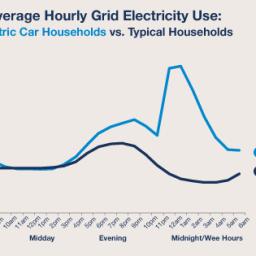This is what electric car owners are doing while you sleep
 By day: electric vehicles are taking the world by storm: their sales are doubling every year, their fuel efficiency is off the charts, and some of them can even accelerate from 0-60 mph about as fast as you can say Elon Musk.
By day: electric vehicles are taking the world by storm: their sales are doubling every year, their fuel efficiency is off the charts, and some of them can even accelerate from 0-60 mph about as fast as you can say Elon Musk.By night: the electric vehicle (EV) community continues to make waves. While you are in bed dreaming about how some day you too might own an electric car, many EV owners are doing something dramatic; something unusual; something that is reshaping the energy landscape.
They are using gobs of electricity.
Read on for some great statistics and graphs. Check out the consumption spike that occurs after dinner.